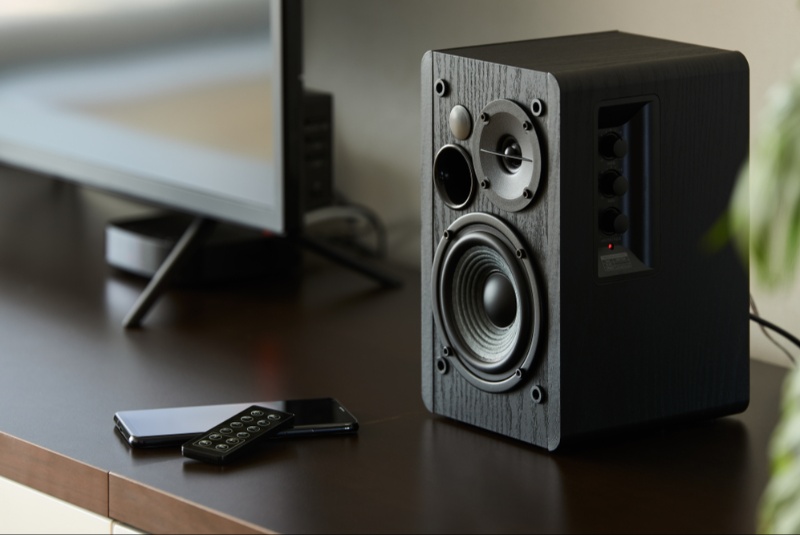Music lovers, movie buffs, and everyone in between often find themselves searching for the best way to elevate their home auditory experience. A sound system is much more than just a set of speakers; it's an avenue to experience audio in its purest, most immersive form. Whether you're watching a movie, bingeing on a TV series, or listening to your favorite music, a quality sound system can make all the difference. Here’s a savvy shopper's guide to ensuring you invest in a sound system that promises and delivers excellence.
1. Understand the Basics
Before diving into brands, models, or technical specifications, it’s essential to understand the core components of a home sound system. Knowing these fundamentals will help you make informed decisions and avoid getting lost in the sea of options.
- Speakers: These are the main elements responsible for producing sound. Speakers come in a range of designs, from compact bookshelf models to towering floor-standing versions. Each type has unique audio characteristics, so consider the speaker size and style that best suits your space and audio needs.
- Receiver or Amplifier: Often referred to as the "brain" of the system, the receiver or amplifier powers the speakers and serves as a control center. Many models offer features such as built-in radio tuners, streaming capabilities, and connectivity options like HDMI and Bluetooth. Choosing the right receiver ensures you get optimal sound quality and convenient access to additional features.
- Subwoofer: A subwoofer is a specialized speaker that handles low-frequency sounds, also known as bass. Adding a subwoofer enriches the audio experience by providing depth and resonance to soundtracks, making music more impactful and movie scenes more immersive.
2. Determine Your Purpose
Identifying your primary use for the sound system is crucial for narrowing down options. Are you planning to use it mostly for music, movies, or a mix of both? For instance, if you’re a film fanatic, you might prioritize a **surround sound system** for an immersive cinematic experience. Surround sound setups distribute audio across multiple speakers placed around the room, creating an enveloping effect ideal for movies and gaming.
On the other hand, if you're a dedicated audiophile who loves vinyl records or high-resolution audio streaming, a **stereo setup** with a focus on music quality might be your best bet. Stereo systems typically consist of two main speakers that deliver rich, balanced sound, enhancing the depth and clarity of music.
3. Room Size Matters
The size and layout of your room have a significant impact on the type of sound system you should consider. Larger rooms may benefit from **floor-standing speakers** or multiple surround sound speakers that fill the space. In contrast, smaller rooms might not require massive speakers, as the sound can easily become overpowering or distorted in tight spaces.
Additionally, room acoustics play a role. Factors such as carpeting, curtains, and furniture placement affect how sound waves move, potentially enhancing or dampening the audio quality. Consider acoustic treatments like rugs, wall panels, or strategically placed furniture to improve sound clarity, especially if your room has a lot of hard, reflective surfaces.
4. Wired or Wireless?
One of the key decisions in setting up a home sound system is choosing between **wired and wireless** systems. Traditionalists often vouch for the purity of wired systems, as they can provide more consistent audio quality without the potential for signal interference. However, wireless systems offer greater flexibility and convenience, particularly if your space doesn’t allow for easy cable management.
Wireless systems are increasingly popular for their ease of setup and flexibility in speaker positioning. Modern wireless sound systems, especially those from reputable brands, offer impressive sound quality, though they may require a stable Wi-Fi connection or Bluetooth pairing to function effectively. Consider your room’s layout, the amount of effort you want to put into managing cables, and whether you value convenience or audio purity more.

5. Surround Sound Configurations
For movie enthusiasts, surround sound configurations can make a big difference in the experience. Here are some common setups:
- 5.1 System: This popular setup includes five speakers and one subwoofer, which works well for most living rooms. It usually involves placing front, center, and rear speakers strategically around the room for an enveloping sound.
- 7.1 System: An extension of the 5.1 configuration, this setup adds two extra speakers for increased depth. It’s ideal for larger rooms and for those looking to replicate a theater-like experience at home.
- Atmos Systems: Dolby Atmos systems introduce overhead or up-firing speakers, creating a three-dimensional soundscape. Sounds seem to come from above, offering an immersive audio experience that brings action scenes and ambient sounds to life.
6. Sensitivity and Power
Speaker sensitivity, measured in decibels (dB), refers to how loud a speaker can get with a given amount of power. Speakers with higher sensitivity ratings produce more sound from the same power input, making them a better fit for smaller rooms or less powerful amplifiers. If you have a large space or a high-power amplifier, you may not need the highest sensitivity, as your system can deliver ample volume and clarity.
Matching your amplifier or receiver’s power output to the speaker’s power handling capability is essential for optimal performance. For instance, low-power speakers connected to a high-powered amplifier can risk damage, whereas high-power speakers paired with a low-output amplifier may struggle to perform at their best.
7. Impedance
Impedance, measured in ohms, indicates how much electrical resistance a speaker offers to the amplifier’s current. Most home audio systems use **8-ohm speakers**, though some are rated at **4 or 6 ohms**. Ensure your amplifier is compatible with your speakers’ impedance rating to avoid strain on the amplifier and to ensure safe, quality sound.
While technical, understanding impedance can prevent compatibility issues. Always verify that your amplifier can handle the impedance of your chosen speakers, especially if you’re considering mixing different types in your setup.
8. Look for Features and Connectivity
Modern sound systems offer a range of features and connectivity options, adding flexibility and convenience. Some popular features to consider include **Bluetooth**, **Wi-Fi**, and **HDMI ports** for easy connection to other devices. Many sound systems also support streaming services like Spotify, Apple Music, and Tidal, providing direct access to your favorite playlists.
Additionally, look for smart features like **built-in voice assistants** or **multi-room audio** capabilities if you’re looking for a more integrated home experience. Deciding on your essential features beforehand helps ensure your sound system meets all your connectivity needs.
9. Audition Before You Buy
Reading specs and reviews provides valuable insights, but nothing beats auditioning a sound system in person. If possible, listen to potential sound systems in a setup similar to your home environment. Showrooms or listening rooms are designed for optimal audio, so hearing a system in a realistic setting will give you a better idea of how it will perform at home. Remember, audio preferences are subjective, so trust your own ears.
10. Budget Wisely
It’s easy to splurge on the latest and greatest, but setting a realistic budget ensures you get the best value for your money. For some, investing in a high-quality but simple stereo setup may be more satisfying than purchasing an average surround sound system. Evaluate your priorities, room size, and intended usage to determine what’s worth the investment.
11. Brands and Reviews
While reputable brands can be a safe bet, it’s also wise to check user reviews and professional critiques. Brands with strong reputations for quality and reliability often offer durable, well-designed products, but user reviews can reveal insights into ease of use, durability, and overall performance. Keep an eye on any recurring issues or complaints that might affect your satisfaction with the system.
A quality home sound system is a worthy investment for any audio enthusiast. By understanding your requirements, doing diligent research, and trusting your ears, you can find a system that brings your audio dreams to life. From music to movies, a well-chosen sound system transforms your listening experience and turns every session into a true audio adventure.




